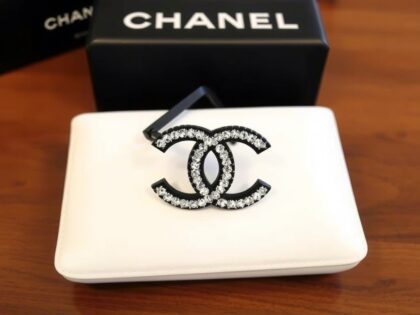
Logomania in Sunglasses
Logomania, the term used to describe the obsession with visible brand logos in fashion, has transcended mere clothing to influence accessories like sunglasses profoundly. As brands such as Gucci, Balenciaga, and Dior have integrated logos into their eyewear, logomania sunglasses have emerged as status symbols in contemporary fashion. This report explores the evolution, cultural significance, trends, and impact of logomania sunglasses.
Historical Context
The fascination with famous brand logos began in the late 2000s, when luxury fashion houses began to understand the power of branding. Initially, logos were subtle and reserved for high-end items. However, in the 1980s and 1990s, brands like Versace and Moschino began prominently featuring their logos on clothing and accessories, paving the way for the logomania trend. This trend found a natural extension in sunglasses, where frames emblazoned with logos became highly coveted.
Design and Aesthetic Trends
Logomania sunglasses typically feature oversized designs with prominent logo placements, often on the temples, lenses, or frames. Materials range from high-quality acetate to metals, signifying luxury and exclusivity. The designs often combine classic and modern aesthetics, resulting in sunglasses that appeal to various consumer tastes.
Key Elements of Logomania in Sunglasses
Logomania sunglasses are characterized by certain elements:
- Large monograms: Many brands prominently display their logos on their sunglasses, seeking immediate recognition.
- Bold designs: In addition to logos, vibrant, contemporary designs are incorporated to attract attention.
- Premium quality: Sunglasses that boast logomania are typically made of high-quality materials, providing durability and a touch of luxury.
-
Iconic Examples:
- Gucci: Known for its distinctive green and red stripe and double G logo, Gucci sunglasses exemplify logomania with bold framing and attention-grabbing details.
- Balenciaga: Featuring exaggerated silhouettes and striking designs, Balenciaga sunglasses push the boundaries of traditional eyewear while prominently displaying the brand name.
- Dior: Their sunglasses showcase a fusion of elegance and avant-garde, with subtle and striking logos that draw customers in with their unique style.
- Versace: Its logomania eyewear collection includes designs that combine its signature ornamental motifs with large, bold logos.
- Gucci: With its focus on retro, Gucci has launched several lines of eyewear featuring large logos that evoke nostalgia for the 1980s and 1990s.
- Fendi: The brand has taken an artistic approach with its logomania eyewear designs, incorporating its logo into creative, abstract shapes.
Cultural Significance
Logomania sunglasses are not merely functional accessories; they serve as cultural markers. The rise of social media has amplified the visibility of these items. Influencers and celebrities who sport logomania eyewear often contribute to the desirability of specific brands, as their influence can drive consumer behavior.
Furthermore, these sunglasses symbolize more than just brand loyalty; they represent a lifestyle and a sense of belonging to exclusive social circles. The desire for logomania pieces has also sparked a conversation about consumerism, identity, and the relationship between fashion and socioeconomic status.
Sustainability and Ethical Considerations
As the logomania trend continues to thrive, the fashion industry faces increasing scrutiny regarding sustainability and ethical practices. The production of sunglasses with prominent logos raises questions about environmental impact and manufacturing processes. Brands are beginning to acknowledge these concerns by offering eco-friendly alternatives and embracing transparency in their production methods.
Conclusion
Logomania sunglasses are a showcase of fashion and culture, setting new trends that attract luxury brands. With their bold designs and cultural significance, they continue to evolve and influence consumer preferences in the fashion industry. As brands navigate sustainability, the logomania trend will likely adapt, reflecting changing consumer values and market demands.
In the coming years, we can expect to see innovative designs that merge logo visibility with eco-conscious practices, shaping the future of logomania sunglasses.
The current landscape of logomania sunglasses reflects a dynamic interplay between consumer desires and brand strategies.
Additional iconic brands, such as Louis Vuitton and Chanel, have also embraced logomania in their eyewear collections. For instance, Louis Vuitton sunglasses often feature the brand’s signature monogram and are recognized for their distinctive, high-fashion flair. Chanel utilizes its interlocking C logo in a variety of stylish designs that enhance the allure of logomania sunglasses.
Logomania sunglasses have increasingly incorporated creative marketing techniques such as collaborations with popular influencers and the use of social media platforms to boost brand visibility. Platforms like Instagram and TikTok have become effective tools for brands to showcase new designs and reach younger consumers, further fueling the trend. This engagement plays a crucial role in shaping consumer perceptions and driving demand for logomania items.
Moreover, the sustainability discourse has led brands like Ray-Ban and Oakley to develop lines that balance brand visibility with eco-friendly practices, such as using recycled materials and sustainable production methods. This shift reflects a growing consumer consciousness towards ethical consumption, influencing how logomania sunglasses are marketed and produced.
In summary, the evolution of logomania sunglasses underscores the importance of branding in modern fashion, while also highlighting the need for ethical considerations in an increasingly aware consumer landscape.
